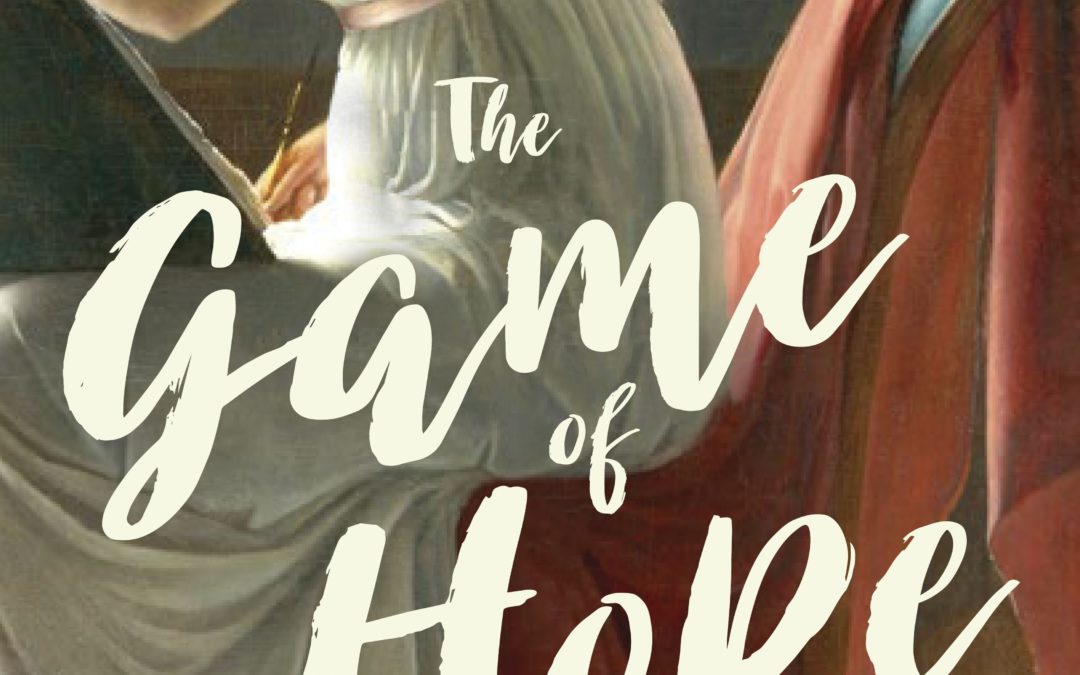
by Sandra Gulland | Mar 30, 2018 | Resources for Book Clubs, Resources for Readers, The Game of Hope, Young Adult Literature |
The painting on the cover of The Game of Hope is by French artist Marie-Denise Villers. It is popularly known as “Young Woman Drawing,” and can be seen in the Metropolitan Museum of Art in New York City. The portrait is said to be of Marie Joséphine Charlotte du Val d’Ognes, but at least one art historian believes that it’s the artist’s self-portrait.
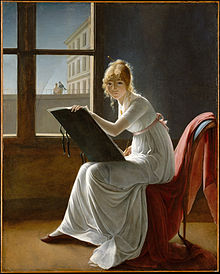
The painting was unsigned and for years it was attributed to the famous French artist Jaques Luis David. It wasn’t until 1995 that Villers was credited for the work.
Although the painting is not a portrait of Hortense de Beauharnais, the young woman looks rather like her, I think, especially in spirit. Here is a portrait — possibly a self-portrait — of Hortense as a teen.
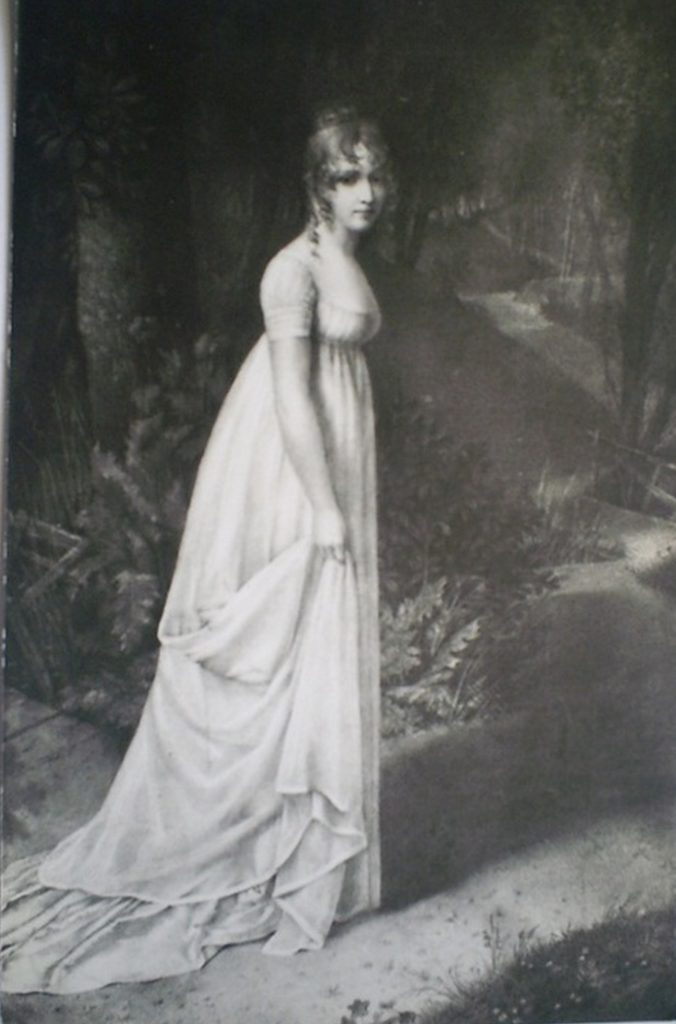
Hortense (possibly a self-portrait).
For portraits of Hortense at all ages, go to my Pinterest board.
For more on this intriguing painting, read “Prof. Anne Higonnet reveals a new twist in storied Metropolitan Museum of Art painting.” Higonnet’s slide presentation on this painting — “White Dress, Broken Glass” — can be seen online, although without the accompanying text it’s difficult to surmise her conclusion.
by Sandra Gulland | Feb 7, 2014 | Adventures of a Writing Life, On Research, The Game of Hope, Young Adult Literature |

I’m at a research-intensive stage of Draft 2.0 of The Game of Hope. (YA1) I’m working to fill in all the pot-holes before sending it off—that is, all the xxx’s in the manuscript, the xxx’s I throw in while rushing through Draft 1. “I was offered a plate of xxx, xxx and xxx.” That type of thing.
Now I’m trying to figure all those xxx’s out.
If I don’t have the facts in my notes or books, I can usually find what I need to know on-line. I googgled “18th century cooking,” for example, and came up with a delightful “cheese wig”: a small bun coated with a cheese sauce that looked like a wig resting on a wig stand. (Then I googled images for “cheese wig”—gross! I don’t recommend it.)
If Google fails, I go to Amazon.com, and look for searchable books.
If that fails, I’ll go to Books Google.
I everything fails, and the answer is in a book I must have, I’ll order it.
I had an educational experience this morning. The book I want is out-of-print, but offered used on Amazon.com. However, I discovered that to ship a 1$ book to me in Mexico could cost $25 to $75 dollars. (With delivery in April.)
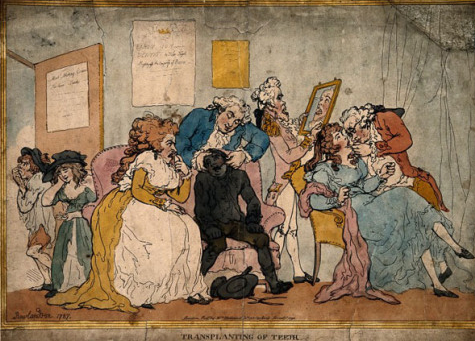
Full stop.
I cut over to Abebook.com, and bought the same book from a used bookstore in the UK for only $1.04 with delivery to Mexico for $7.75—and it may well arrive in a week.
Lesson learned: watch those shipping charges! And always check out Abebook.com.
(Another lesson learned: in looking for illustrations for this blog post, I discovered not to google images of “xxx”!)
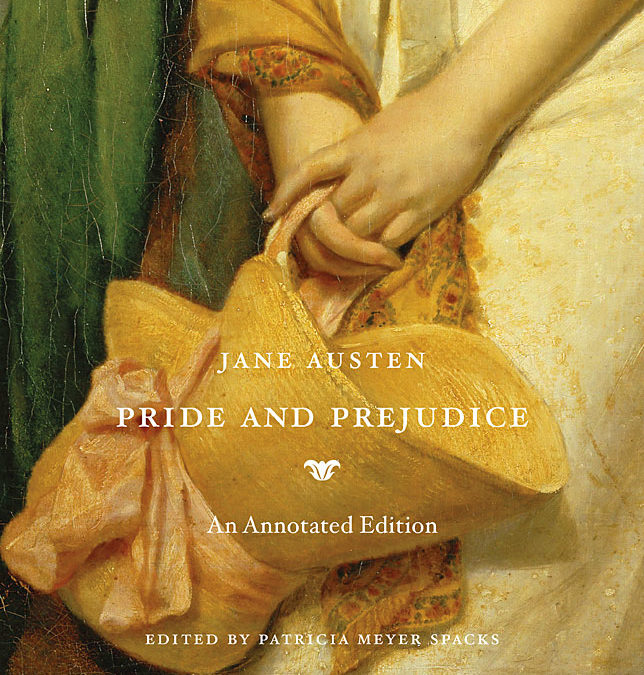
by Sandra Gulland | Jun 6, 2013 | Adventures of a Writing Life, On Research, The Game of Hope, The Writing Process, Young Adult Literature |
As research for writing a YA about Hortense, I’m reading a lot about Jane Austen right now—or, at the least, I seem to be surrounded by books and blogs about her. Yes, I admit, I’m seeking her out.
For example, this wonderful website: What Jane Saw, an exhibit she actually went to see. Follow in her footsteps; look at the paintings she saw.
I’m reading—very, very slowly—the Harvard University Press annotated edition of Pride and Prejudice (shown above). This is a sumptuous book, a sumptuous series. (For a video on this book: click here.)
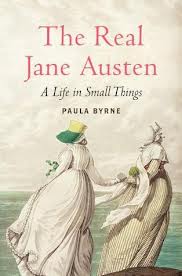
Another book I’m reading is The Real Jane Austen: A Life in Small Things by Paula Byrne: delicious.
And another: A Dance with Jane Austen by Susannah Fullerton, which I discovered through the wonderful blog Jane Austen’s World. This is a wonderful book.

“Why Jane?” my son asks, and I have to tell him frankly that I don’t think she’d be his cup of tea. But then neither might be Dickens or Shakespeare, at least not in his fast-paced world. In a University course: certainly. And then, forced into another time and pace (the beauty of higher education), he might think, “Wow.” For she’s right up there with the greats of literature.
This in spite of the fact that she is so very subtle, so not showy. Who was it who said—I think it was Virginia Woolf—that it’s very hard to catch Jane Austen in an act of greatness.
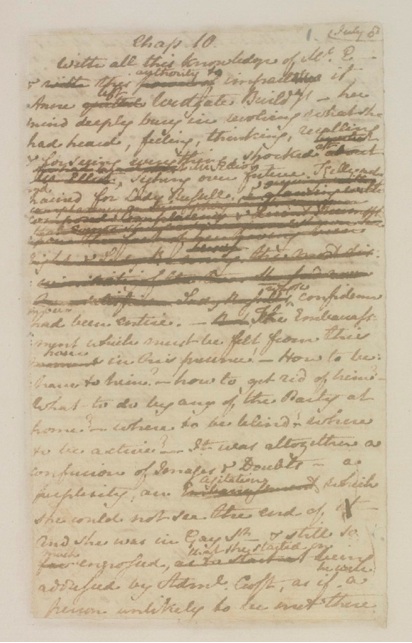
She wrote during the day, and read what she’d written to her family in the evening. She did not have a desk of her own, much less a room.
It’s a mistake to think that her’s was a purer world. The worlds she created are pure, yet a man she and her sister admired, a nobleman, had a strange affection for drinking the blood of his servants. (Note that such details do not show in her novels.)
For Mother’s Day, my son suggested I pick a t-shirt from this wonderful site: Out of Print Clothing.
Which one did I pick? Well, of course: Pride and Prejudice:

I love it! (And no: this is not me.)
What’s your favourite Jane Austen? And why?











